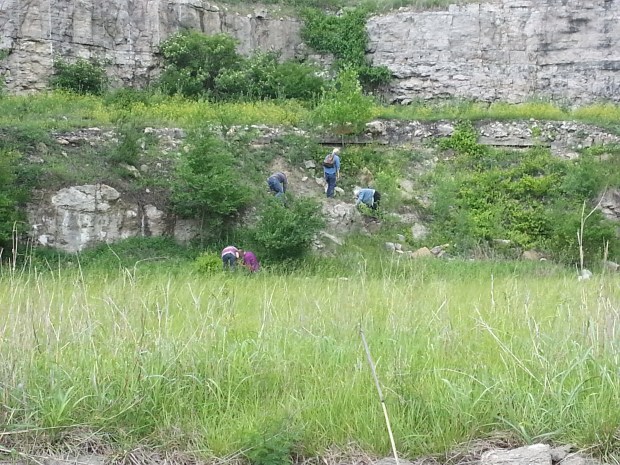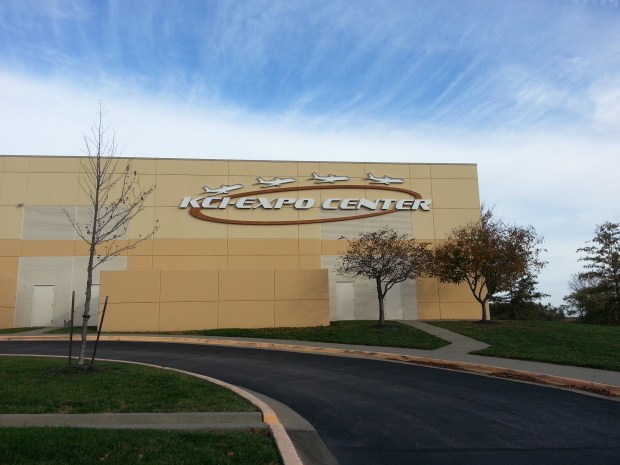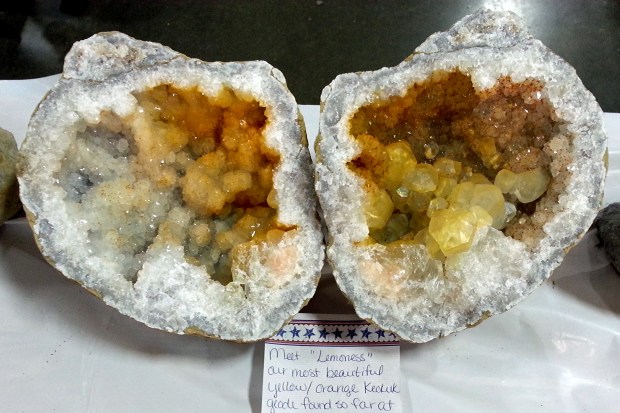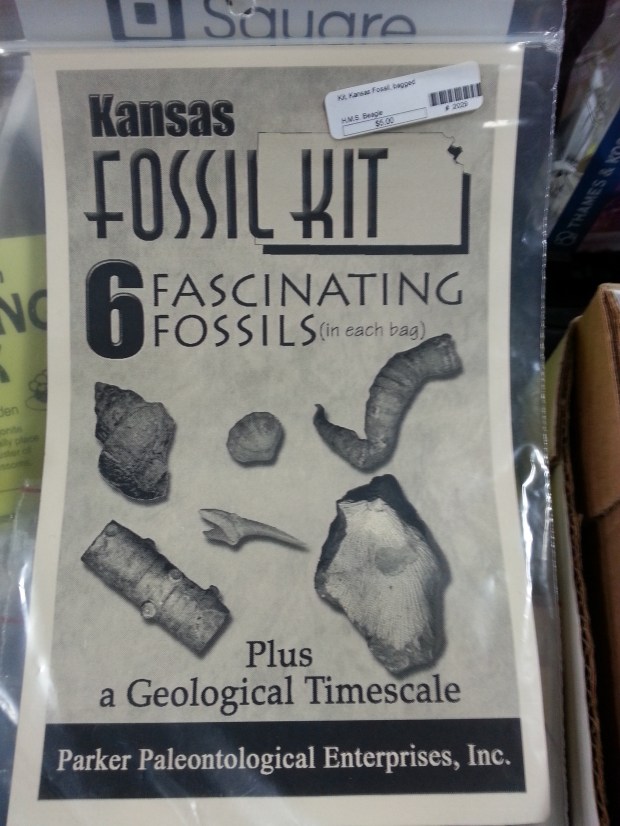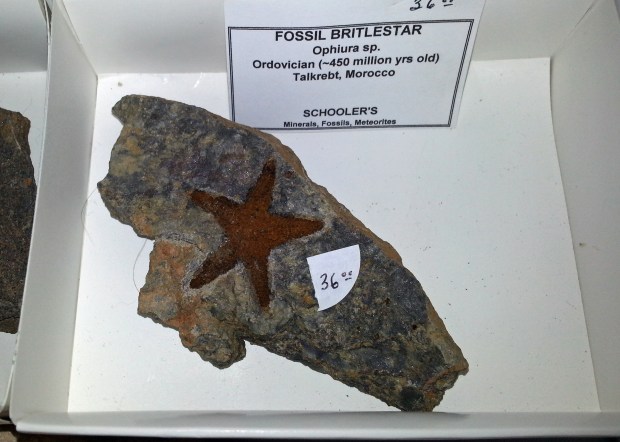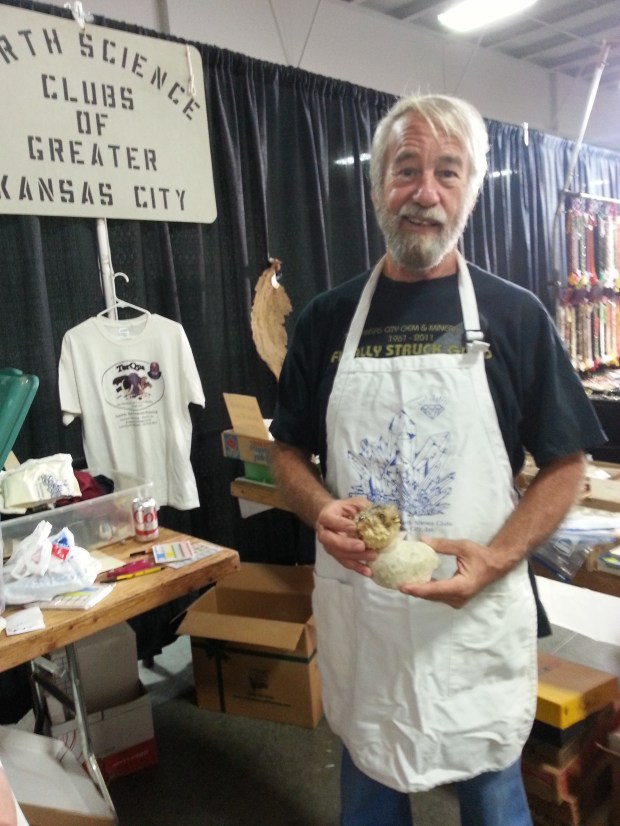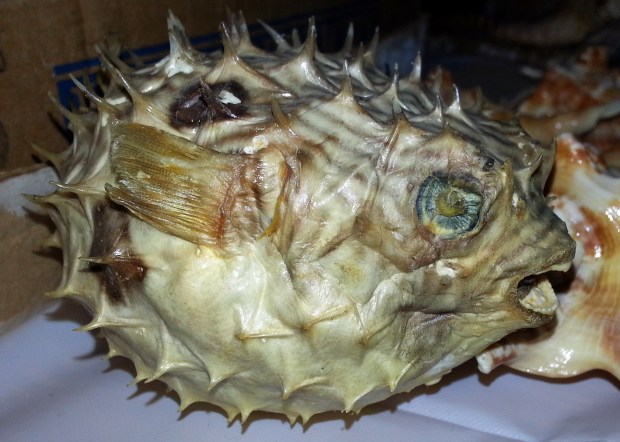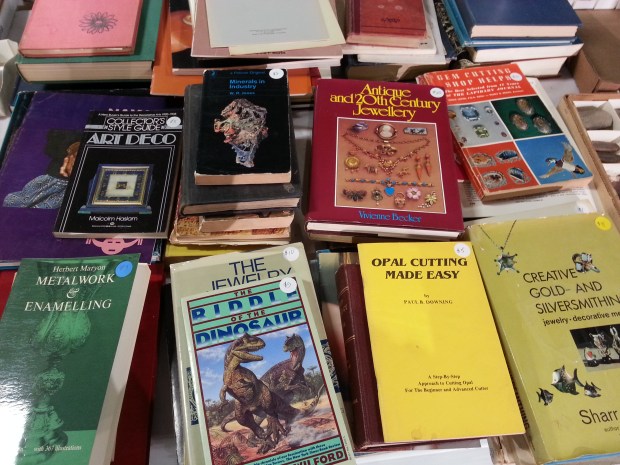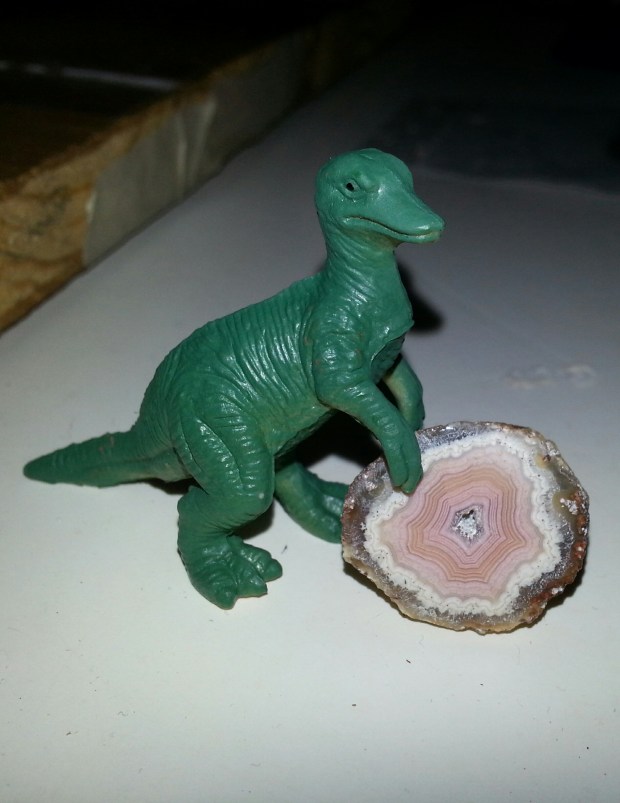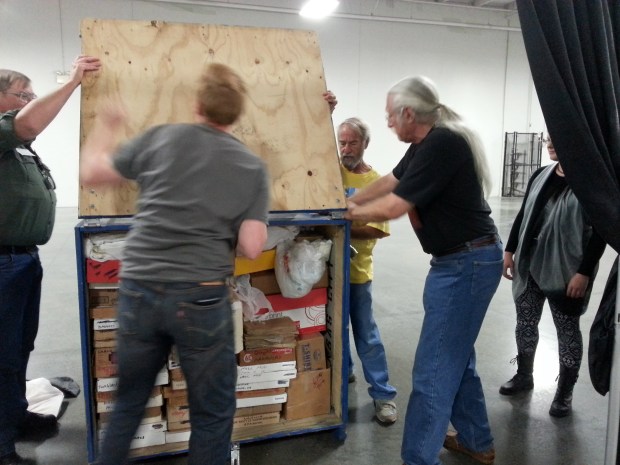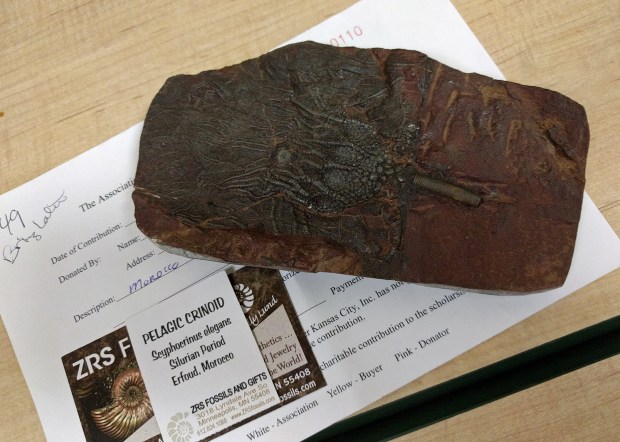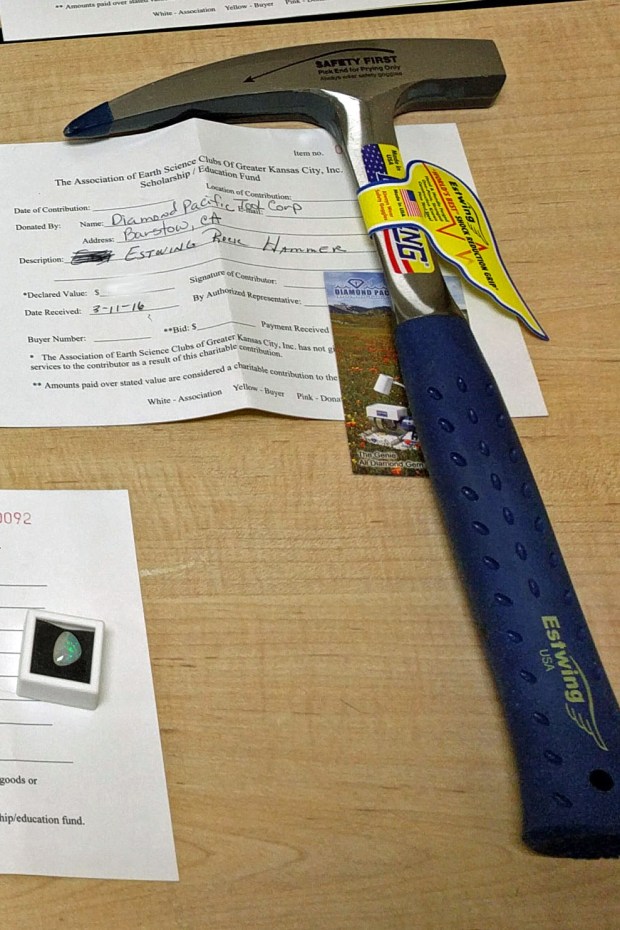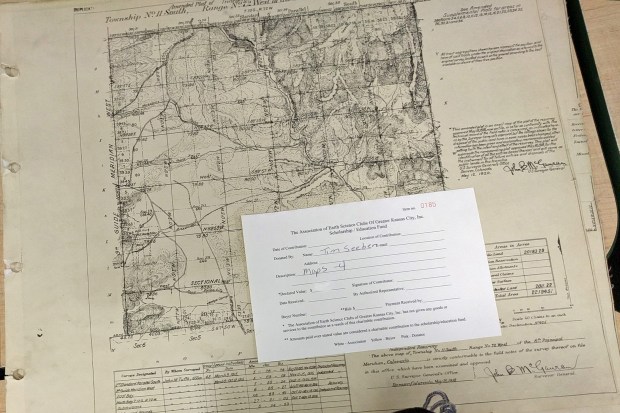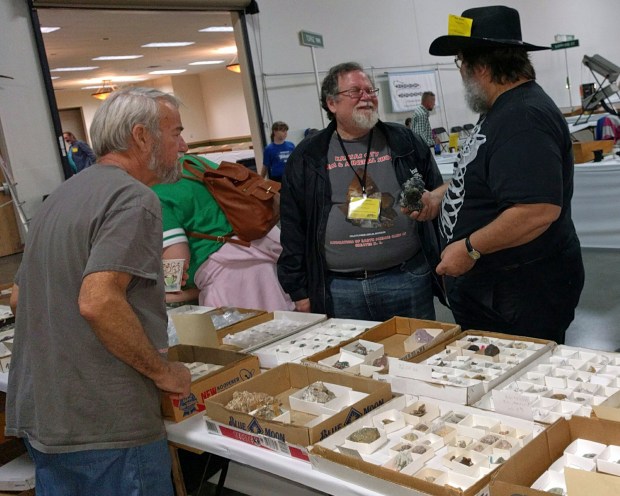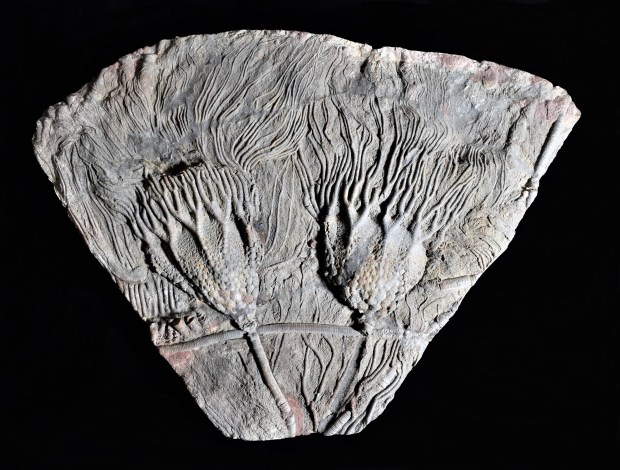
Crinoids in the collection of Dan & Connie Snow : Photos by Dan Snow
Scyphocrinites elegans: Crinoid with lobolith float Upper Silurian Period, Djebel Issoumour, Alnif, Morroco
CRINOIDS are know as feather stars or sea lilies and are echinoderms. A familiar form of echinoderm is the starfish. Crinoids are alive today in the oceans but were more prevalent in prehistory. They live primarily in shallow water but have also been found in extreme deep sea environments.
Crinoids resemble a flower with tentacles but are in fact animals. They are filter feeders and have feather-like appendages that strain food particles from the ocean currents. Some live as floating organisms but most are attached to the ocean floor by the means of a segmented stem. Most fossilized crinoids are found disarticulated in beds of numerous fragments but they also can be found in articulated forms as they once were when alive. The first occurrences of crinoids in the fossil record as found in the Ordovician Period.




